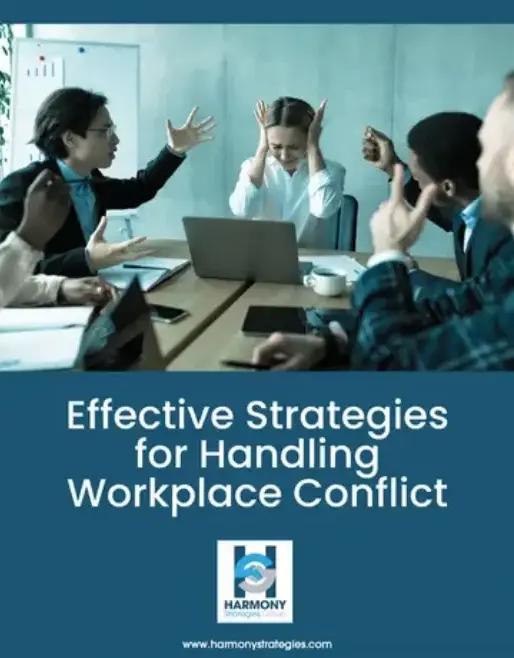It’s not just what’s said in meetings – it’s also what’s missed.
Most organizations don’t realize how much their meetings say about their culture – everything from setting the agenda to the energy in the room. Is there active engagement or does the room tend to fill with dramatic silences? When meetings feel “off” it’s usually a sign of human capital risk. In these situations, decision-making is muddled, and typically the same voices dominate while others stay silent – and a dialogue or meeting facilitator is exactly what you need.
If meetings start to feel like landmines or time-wasters, it’s a red flag, and you need help.
In recent years, more organizations are recognizing the value of professional dialogue and meeting facilitators as key partners to shift meeting dynamics. Outside neutrals specialize in crafting effective communication spaces and addressing weaknesses and disengagement.
Let’s explore how facilitation supports both performance and people.
Facilitators Are Trained to Hear What’s Not Said
The facilitator doesn’t just keep time or move things along – a skilled facilitator is trained to listen beneath the surface, to spot avoidance patterns, power imbalances, or recurring communication breakdowns that may be harming the group.
Where HR or leadership might miss or inadvertently contribute to a tension, a neutral third-party facilitator holds space for all and quickly identifies weaknesses.
In Harvard Business Review’s article, “Crucibles of Leadership”, Warren Bennis describes how leaders grow when they can make meaning from difficult, even painful, experiences. A facilitator helps teams do just that – make meaning together in the midst of discomfort.
Real-Time Insight into Human Capital Risk
Human capital risk doesn’t always come with a warning label. It often shows up as:
- Disengagement in strategy sessions
- Hesitation to share ideas or concerns
- Side conversations that never make it into decision rooms
- Confusion around direction, accountability and ownership
- Resentment from previous unresolved issues
A practiced facilitator notices when the group is avoiding certain topics or when individuals are being left out of the conversation. Many are specially-trained in conflict management techniques, so they can help teams explore tensions in psychologically safe ways, without escalating.
Facilitation Supports Equal-Share in the Meeting
The way we communicate in groups reflects our organizational norms and assumptions. Without intentional facilitation, dominant voices (often aligned with formal power structures) tend to set the tone, while others may self-silence.
Facilitators foster:
- Well-designed and intentional agendas.
- Balanced airtime across all meeting attendees.
- Gently surfacing elephant-in-the-room dynamics.
- Collaborative, round-robin speaking formats.
These are essential, protective measures against the quiet erosion of teamwork..
Teams only thrive when people can speak up about issues and challenges. Facilitated spaces help ensure that happens.
From “One-Off” to Ongoing Insight
While many organizations bring in facilitators for offsites or strategy sessions, the real value is in applying facilitation as an ongoing tool for organizational health.
At Harmony Strategies Group, we’ve supported clients with:
- Cross-functional dialogue across siloed departments.
- Meetings to discuss “difficult clients” and how to address aggression from external parties.
- Conflict-sensitive decision-making and policy-planning.
- Culture review and transformation initiatives.
- Post-layoff or post-crisis reconnection circles.
Over time, facilitation becomes part of a feedback ecosystem and a way to continuously keep a pulse on human capital risks before they become liabilities.
When Facilitation is Especially Critical
While facilitation can benefit any organization, it’s especially important during:
- Initiatives to address harms or problems.
- Mergers, acquisitions, or restructurings.
- Application of new policies, or systems..
- Leadership transitions.
- Team dysfunction or misalignment.
- Post-conflict recovery or employee relations challenges.
With the right support, facilitated dialogue can lead to radical positive transformation.
What To Do Next
Think about the last 3 meetings you attended: What patterns did you notice about how people communicated? Where might facilitation have helped clarify, connect, or calm the group?
If your meetings are feeling tense, off-track, or unproductive, it’s time to bring in facilitation support to safeguarde your most valuable asset: your people.
At Harmony Strategies Group, we offer experienced dialogue and meeting facilitation designed to surface insight, build trust, and guide teams through high-stakes moments. Let’s design a process that supports your people and your goals. Reach out to us.
References and Resources
HBR Article: Crucibles of Leadership – Warren Bennis & Robert Thomas

